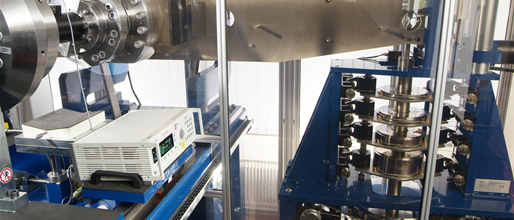Shunt Signal
All HBM torque sensors with contactless measurement signal transmission (e.g. T40B, T12) have a shunt signal [1]. It is approximately 50% of the nominal (rated) measuring range and is an absolute value (eg N•m) specified on the type plate and in the manufacturing certificate.
When this shunt signal is used for checking a torque sensor, actual shunting is carried out on the rotor of the measurement shaft. This means that a fixed resistor is electronically connected in parallel to a bridge arm of the Wheatstone Bridge circuit. The resulting bridge unbalance value is converted to the shunt signal specified on the type plate using the data resulting from the mechanical calibration on our accredited calibration machine (see fig. 1). In general, the resulting values are "non-uniform" and the shunt signals differ from transducer to transducer.
The shunt signal serves two purposes:
- Adjustment of downstream instruments and adaptation to the individual torque transducer
- Checking and monitoring of torque transducers in conjunction with zero point monitoring.


